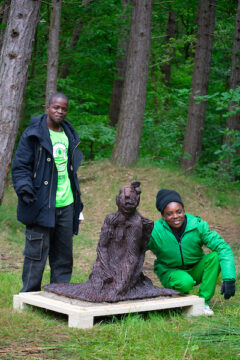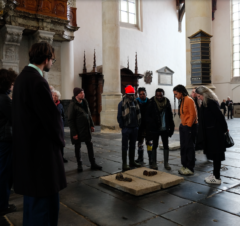Ced’art Tamasala (CATPC) speaks at AFIELD Forum in Brussels

Photo credits: Ced’art Tamasala at the launch of CATPC’s educational program Cercle Luyalu, 2022. Photo: Ephraim Baku.
The AFIELD Forum: Transitional Justice by Artists is a three-day conference in Brussels that centers artists who contribute to the mechanisms of transitional justice. On Wednesday, 28 May at 16:30 in Globe Aroma, Ced’art Tamasala will speak for CATPC with Renzo Martens (Human Activities) and François Makanga in a panel that bridges two entwined geographies: a former Unilever plantation in the village of Lusanga, deep in DR Congo, and Brussels, a city whose wealth and identity are inseparable from its colonial past. The conversation explores these respective «sites» — the plantation and the city — and how their decolonial practice subverts and reclaims cultural institutions as arenas of contestation and restitution.
New series of Women’s Workshops in Lusanga

Photo credits: Eléonore Héllio
Currently, the second edition of CATPC’s Women’s Workshop is taking place in Lusanga. CATPC’s Women’s Workshop gives women who are usually only able to work on plantations, the chance to express themselves through making art. The women get acquainted with painting, sculpture and performance (including music). Additionally they learn about regeneratieve forestry. Meals are shared daily, grounding the work in care and community.
Festive Opening Two Sides of the Same Coin – CATPC solo show at the Van Abbemuseum

Photo credits: Boudewijn Bollmann
CATPC’s solo show at the Van Abbemuseum, titled Two Sides of the Same Coin, opens Saturday 21 December 2024. The festive opening event will take place on 18 January 2025. During this event, you can visit the exhibition for free all day and attend a special programme.

Photo credits: Peter Tijhuis
Screening and Talk at MACBA / Dart Festival, Barcelona
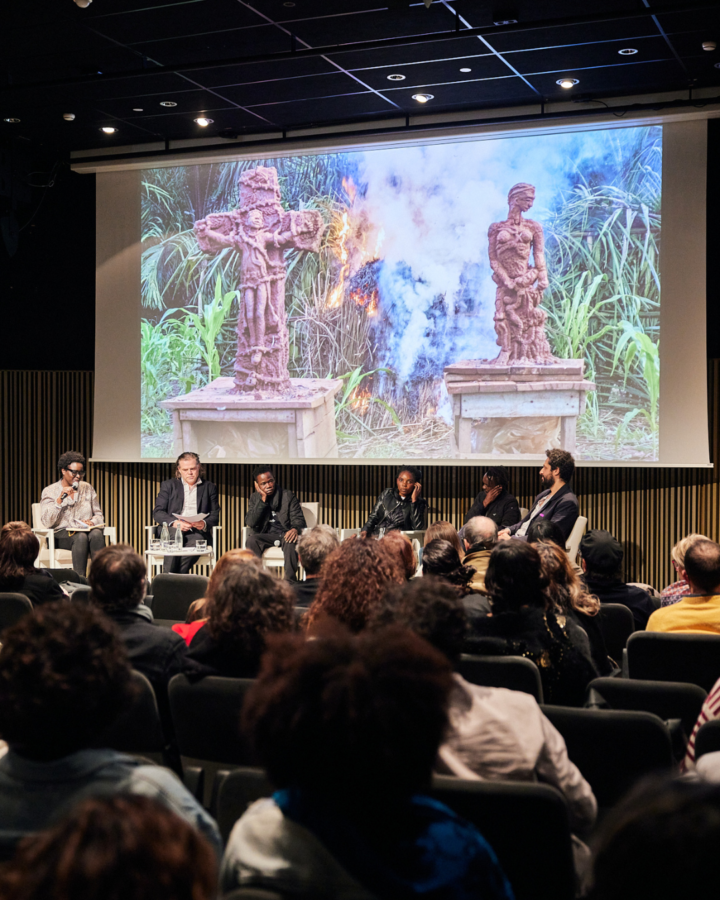
Photo credits: Leafhopper
As part of the DART Festival and in collaboration with MACBA, this event on 4 December explores the relationship between art and activism through the project presented by artist Renzo Martens and the Congolese artist collective CATPC at the 2024 Venice Biennale. The session includes the screening of three short films by the collective, followed by a discussion with Mbuku Kimpala, Ced’art Tamasala and Matthieu Kasiama (members of CATPC), Renzo Martens, and Hicham Khalidi, moderated by Elvira Dyangani Ose, Director of MACBA.
The event starts at 7 PM.
More info: here.
Bathtub Lecture Stedelijk Museum Amsterdam
During the third Bathtub Lecture on 30 November, artists Renzo Martens and Ced’art Tamasala will outline a shared future for the Stedelijk in which the museum is by and for everyone.
Before the lecture, Martens will perform a partial re-enactment of an iconic work by artist Jan Dibbets from 1969, in which he dug trenches at each corner of the Stedelijk building to expose the museum’s foundations.
Martens says: “Workers are co-authors of the Stedelijk. This awareness can form the basis for a museum that is by and for everyone.”
Start performance: 10:30 (outside of Stedelijk Museum, Van Baerlestraat side)
Start lecture: 15:00 (Auditorium Stedelijk Museum)

Naissance merveilleuse, CATPC, Venice Biennale, photo: Peter Tijhuis, 2024
From December 21, 2024, to March 2, 2025, the Van Abbemuseum presents Two Sides of the Same Coin, a powerful solo exhibition by CATPC following their Venice Biennale showcase. Featuring sculptures, drawings, textiles, and video installations, the exhibition explores themes of colonization, land regeneration, and the global art world’s structures of recognition and wealth.
Programme in Terneuzen City Center
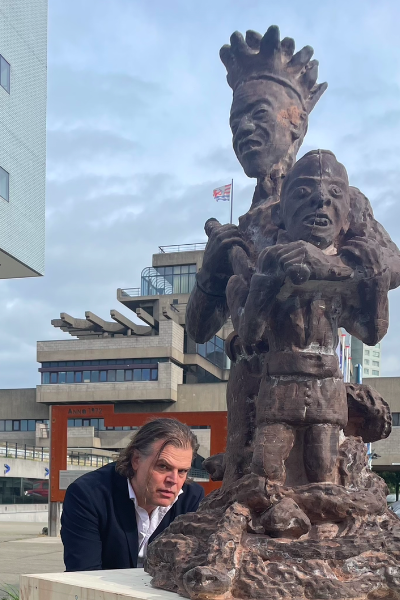
Six sculptures by the art collective of plantation workers CATPC were on display from 9 to 27 October in the center of Terneuzen, the Netherlands, as part of the celebration of the opening of the new sluices. This is a step towards the programme LEARN, DIG, BUILD, leading up to a new arts center in Zeeuws-Vlaanderen that will focus on exchange between global working-class communities. On Saturday 12 October, screenings of the film White Cube were followed by a talk by Renzo Martens to elaborate on the ideas behind the new arts center.
Grant for New Art Platform in Zeeland
The Institute for Human Activities (IHA) receives €250,000 grant from the Province of Zeeland for the project LEARN, DIG, BUILD. IHA’s goal for the coming years is to put their unique working model and expertise for the benefit of structural change in the Netherlands, and more specifically: to build a new art platform in Zeeland: a place for the art of the working class.
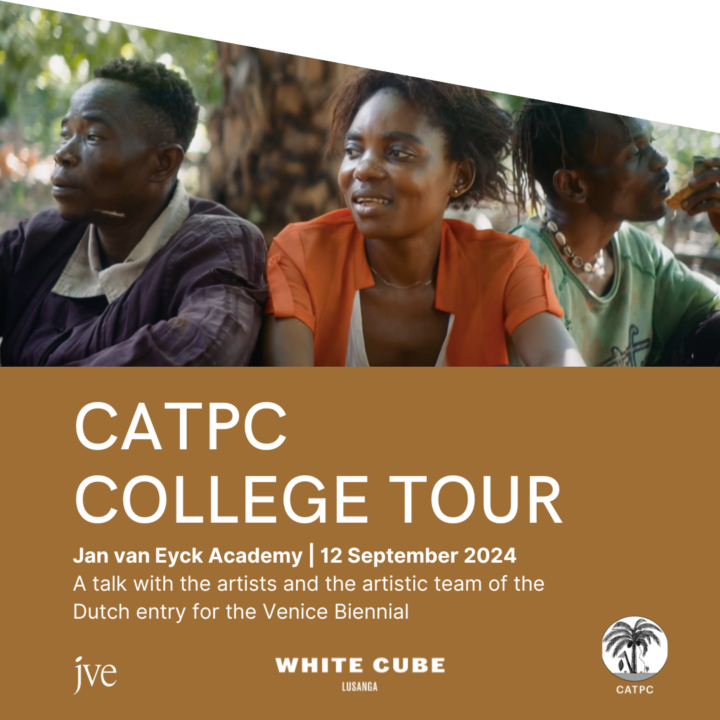
12 September was the start of CATPC’s tour of schools and academies in the Netherlands, where they talked about their experience as Dutch representatives at the Venice Biennale and their long-term practice of getting back their land, history and future through art.
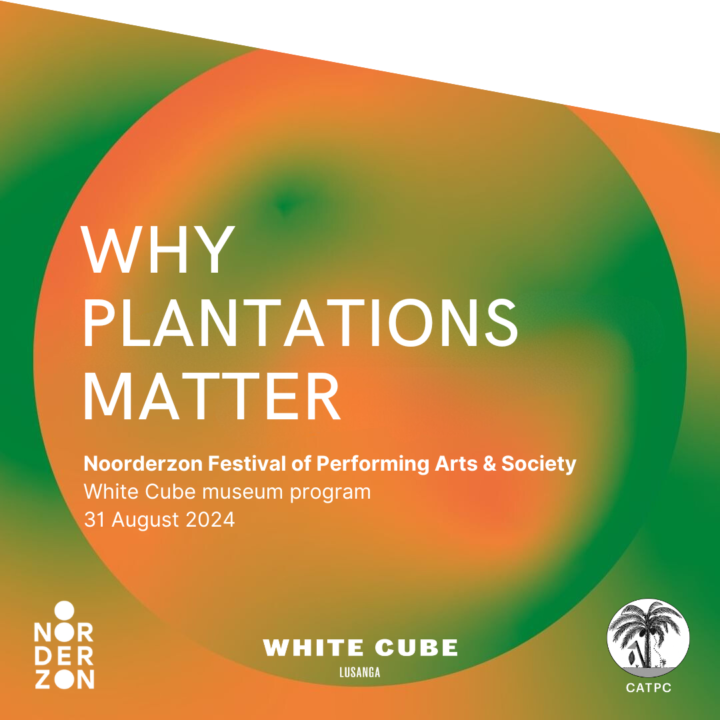
CATPC members Matthieu Kasiama, Mbuku Kimpala and Ced’art Tamasala went to Noorderzon Festival where they gave two talks and an introduction to the screening of the documentary series Plantations and Museums on Saturday 31 August 2024. Renzo Martens had a discussion with art and culture philosopher Thijs Lijster about the value of art and culture on 28 August. One of CATPC’s sculptures was exhibited outside for the duration of the festival.
CATPC wins Grand Prize of S+T+ARTS Art Prize Africa ’24 with Balot NFT
The Balot NFT project by CATPC was selected out of 405 submissions from 35 countries to win the Grand Prize of the first STARTS Prize Africa. The award recognizes an innovative model of restitution that uses NFTs to re-collectivize African cultural assets, making them a tool of the decolonization movement.
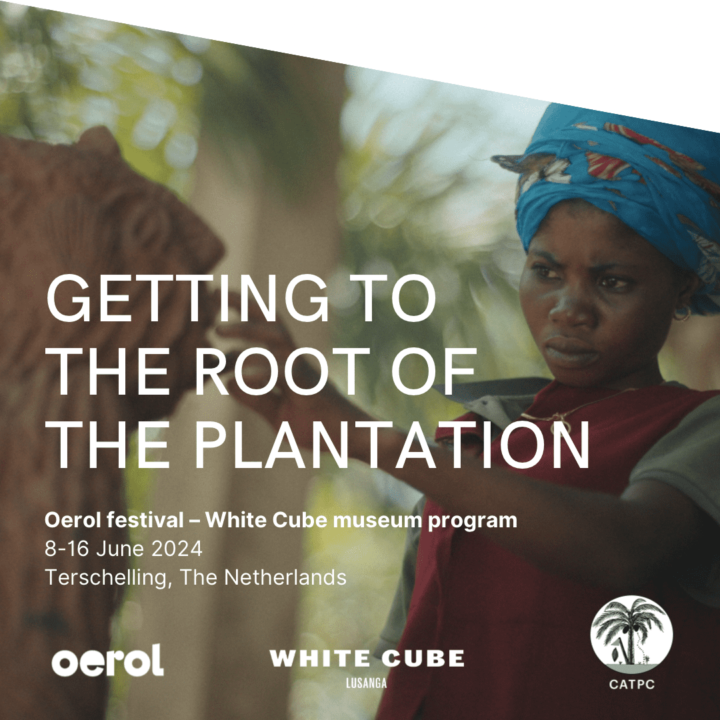
Image: CATPC member Irène Kanga with her sculpture ‘Racines’. Cinematography by Jurgen Lisse.
CATPC is taking part in the expedition program at Oerol, a theatre festival on the island of Terschelling, The Netherlands, with their installation ‘Getting to the Root of the Plantation’. Deep in the forest of the island, two sculptures will be on display: Racines (Irène Kanga / CATPC, 2023) and Crucifixion du Bailleur (Matthieu Kasiama & Ced’art Tamasala / CATPC, 2023).
CATPC member Blaise Mandefu Ayawo passed away
It is with deep sadness that we announce the passing of CATPC member Blaise Mandefu Ayawo. Blaise was 55 years old. He leaves a wife and five young children.
After installing the exhibition in the Dutch Pavilion, Blaise fell ill during the opening week of the 60th La Biennale di Venezia. After a hospitalization of almost two weeks, Blaise passed away. We are grateful to the staff at Ospedale dell’Angelo for their dedicated care.
Blaise Mandefu Ayawo
9/9/1968 – 29/4/2024
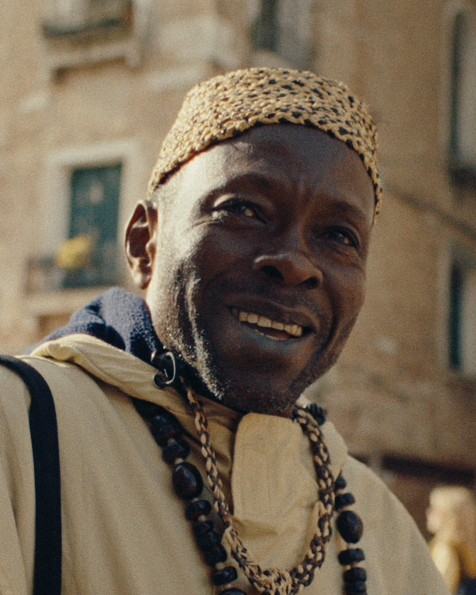
Blaise in Venice, photo: Jurgen Lisse, 2024.
Dutch Pavilion officially opened – Venice Biennale
17 April 2024
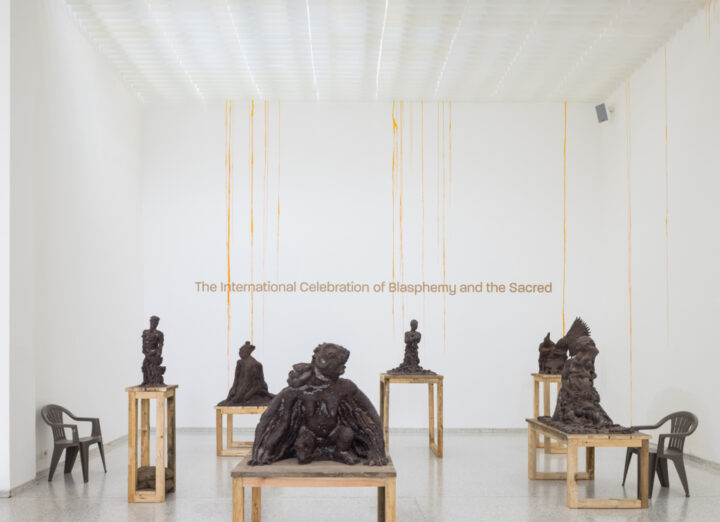
Image: Peter Tijhuis, 2024
The Dutch Pavilion at the 60th International Art Exhibition La Biennale di Venezia was officially opened on Wednesday 17 April by Barbera Wolfsensberger, Director-General of Culture and Media. The Dutch entry, The International Celebration of Blasphemy and The Sacred, is a presentation by Congolese artist collective Cercle d’Art des Travailleurs de Plantation Congolaise (CATPC). Created in collaboration with artist Renzo Martens and curator Hicham Khalidi, it highlights CATPC’s endeavour to reclaim the sacred forests of Lusanga, along with their broader mission of spiritual, ethical and economic reckoning.
Preview Dutch Pavilion – Venice Biennale 2024
27 March 2024
The Congolese artist collective Cercle d’Art des Travailleurs de Plantation Congolaise (CATPC) will represent the Netherlands at the Venice Biennale 2024, supported by artist Renzo Martens and curator Hicham Khalidi. In the run-up to the 60th biennale, opening on 20 April, they gave a preview of their joint plan and elaborated on the story behind their choices in De Balie, Amsterdam.
Ancestral sculpture Balot back in Congo
19 March 2024
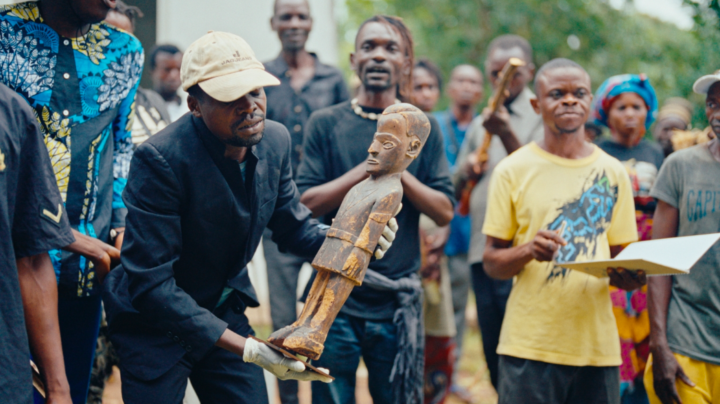
Film still from ‘The Judgement of the White Cube’, CATPC, 2024, image by Jurgen Lisse
Last week, the sculpture Balot arrived in Lusanga, Congo, from the Virginia Museum of Fine Arts (VMFA). On Tuesday 19 March, the artists’ collective Cercle d’Art des Travailleurs de Plantation Congolaise (CATPC) organised a special ceremony to welcome back the sculpture. In anticipation of the Dutch representation at the 60th edition of La Biennale di Venezia, CATPC applied for Balot’s temporary loan. CATPC is collaborating for the Dutch entry with artist Renzo Martens and curator Hicham Khalidi. The sculpture will be on public display at the White Cube in Lusanga from 20 April to 24 November 2024, in parallel with La Biennale di Venezia. At the Dutch pavilion in Venice, Balot will be on view via a live stream.
The Virginia Museum of Fine Arts (VMFA) approves temporary loan request by artist collective CATPC
12 February 2024
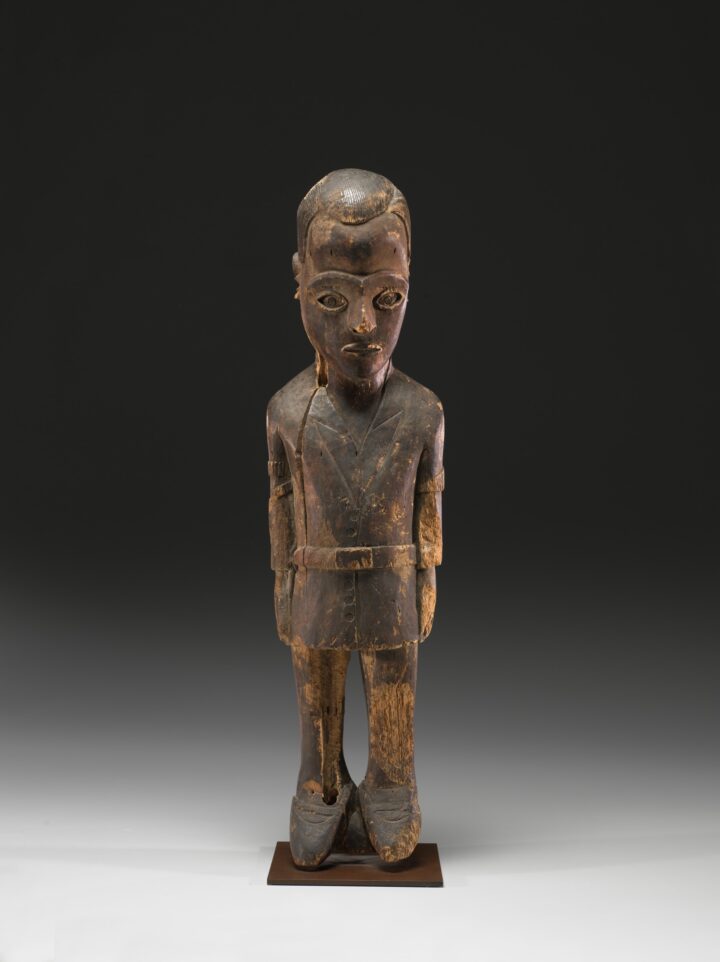
Image: Chief’s or Diviner’s Figure Representing the Belgian Colonial Officer, Maximilien Balot, circa 1931, Unknown artist (Pende, Democratic Republic of the Congo), wood (possibly Alstonia Boonei) with metal repair staples. Virginia Museum of Fine Arts, Aldine S. Hartman Endowment Fund, 2015.3. Photo by Travis Fullerton © 2015 Virginia Museum of Fine Arts.
Historic step forwards for artist collective Cercle d’Art des Travailleurs de Plantation Congolaise (CATPC) and Lusanga (DRC), as Virginia Museum of Fine Arts confirms the loan of the sculpture ‘Balot’, a carved wood ancestral power-figure made in 1931. CATPC requested the temporary loan of Balot in anticipation of the exhibition in the 2024 Dutch National participation at the International Art Exhibition of La Biennale di Venezia in collaboration with Dutch artist Renzo Martens and curator Hicham Khalidi. The sculpture is expected to be on display in Lusanga to the public from April 20 to November 24, 2024, parallel to the Biennale di Venezia.
CATPC and Renzo Martens Dutch Entry for the Venice Biennale 2024
17 April 2023
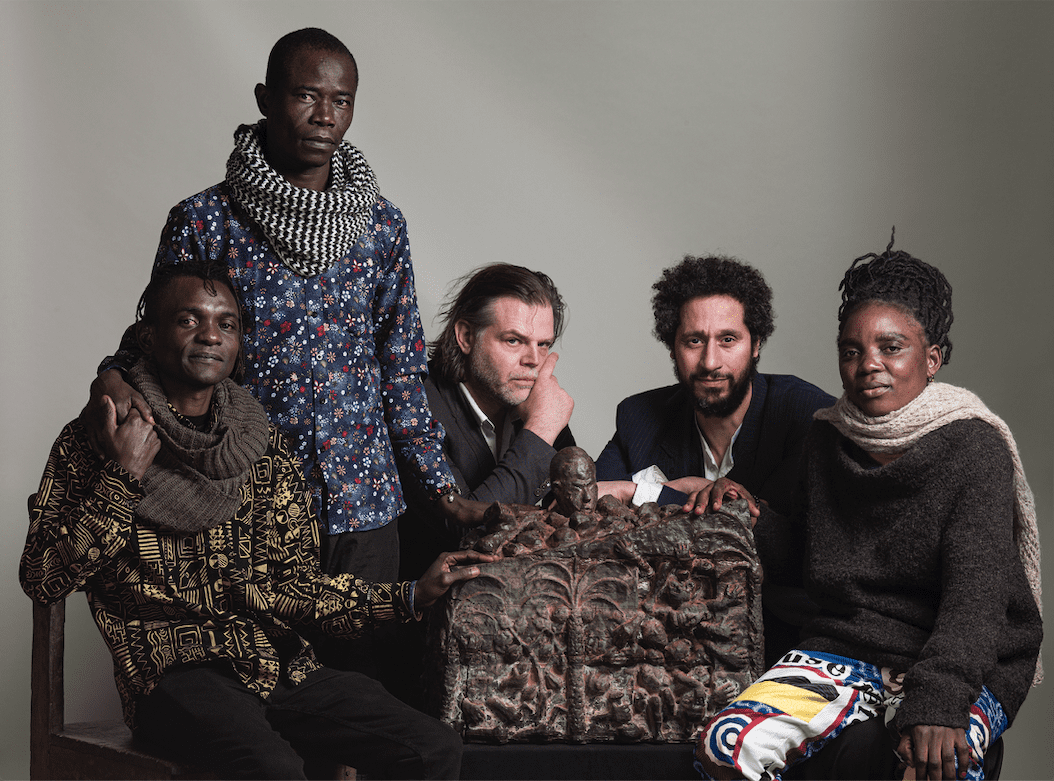 Image, from left to right: Ced’art Tamasala (CATPC), Matthieu Kasiama (CATPC), Renzo Martens, Hicham Khalidi, Mbuku Kimpala (CATPC). Photo: Koos Breukel, 2023
Image, from left to right: Ced’art Tamasala (CATPC), Matthieu Kasiama (CATPC), Renzo Martens, Hicham Khalidi, Mbuku Kimpala (CATPC). Photo: Koos Breukel, 2023
Renzo Martens, Cercle d’Art des Travailleurs de Plantation Congolaise (CATPC) and curator Hicham Khalidi will be providing the Dutch entry for the Venice Biennale 2024. The joint plan will be open to the public from 20 April 2024 at the Rietveld Pavilion in Venice and simultaneously at the White Cube in Lusanga, the Democratic Republic of Congo (DRC). This Dutch entry will therefore consist of two presentations that are directly mirrored and connected.
31 August – 3 September 2023
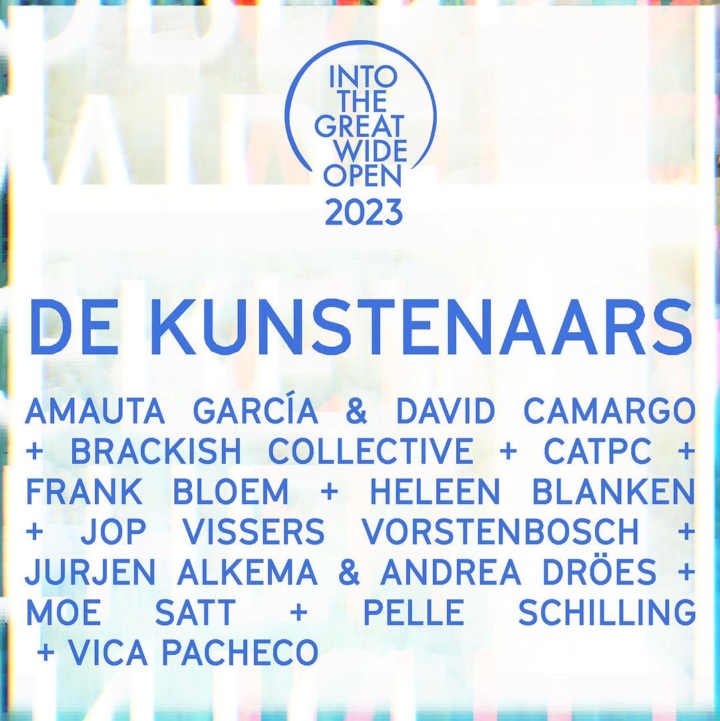
Several works by CATPC and Renzo Martens will be on view as part of Into the Great Wide Open’s festival art program.
The installation Why Plantations Matter will be spread out over the forest of Vlieland and in the Tromp’s Huys museum. In the forest, you will find Athanas Kindendie / CATPC’s Plantation Monoculture – a sculpture which criticizes the monoculture of palm plantations that took a century-long grip on the land and completely depleted it – and the Balot NFT. In the museum, the series Plantations and Museums will be on view.
Current Vacancies at Human Activities
1 September 2023
We are looking for:
Medewerker Financiën, Subsidies en Bureau (filled)
Intern Projects and Exhibitions (filled)
7 June 2023
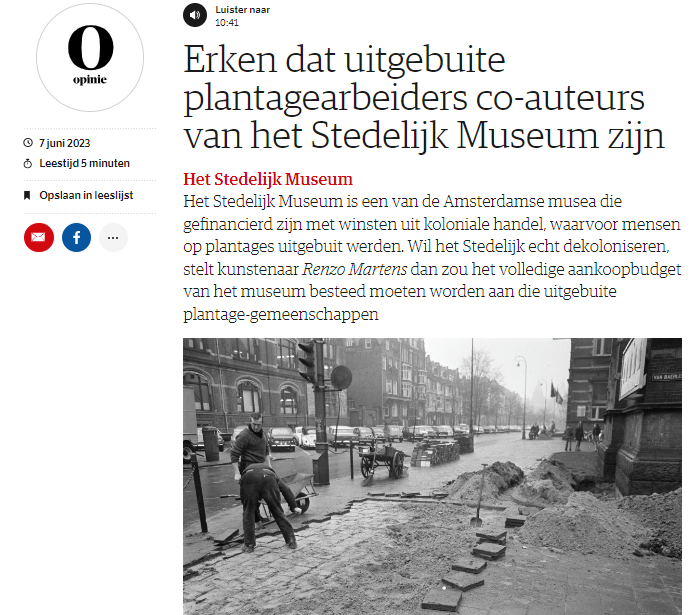
Image: Screenshot of Renzo Martens’ publication on NRC, including “On the loose” by Jan Dibbets (1969), photo: Stedelijk Museum Amsterdam
On 7 June 2023, Renzo Martens’ article about the connection between plantation workers and the Stedelijk Museum Amsterdam was published. In the publication, Martens begins by presenting the work of Dutch artist Jan Dibbets who, in 1969, dug out the four corners of the Stedelijk Museum to expose its foundations and question the existence of the museum. Fifty years later, while still speculating on the unrestrained continuation of plantation labor, the Stedelijk has not yet given credit to the plantation workers who contributed to the construction of the museum. Martens writes:
“The truth is that plantation workers are the co-authors of every single wall, every beam of light and every line of perspective.”
CATPC Walk & Talk at the Oude Kerk
19 March 2023
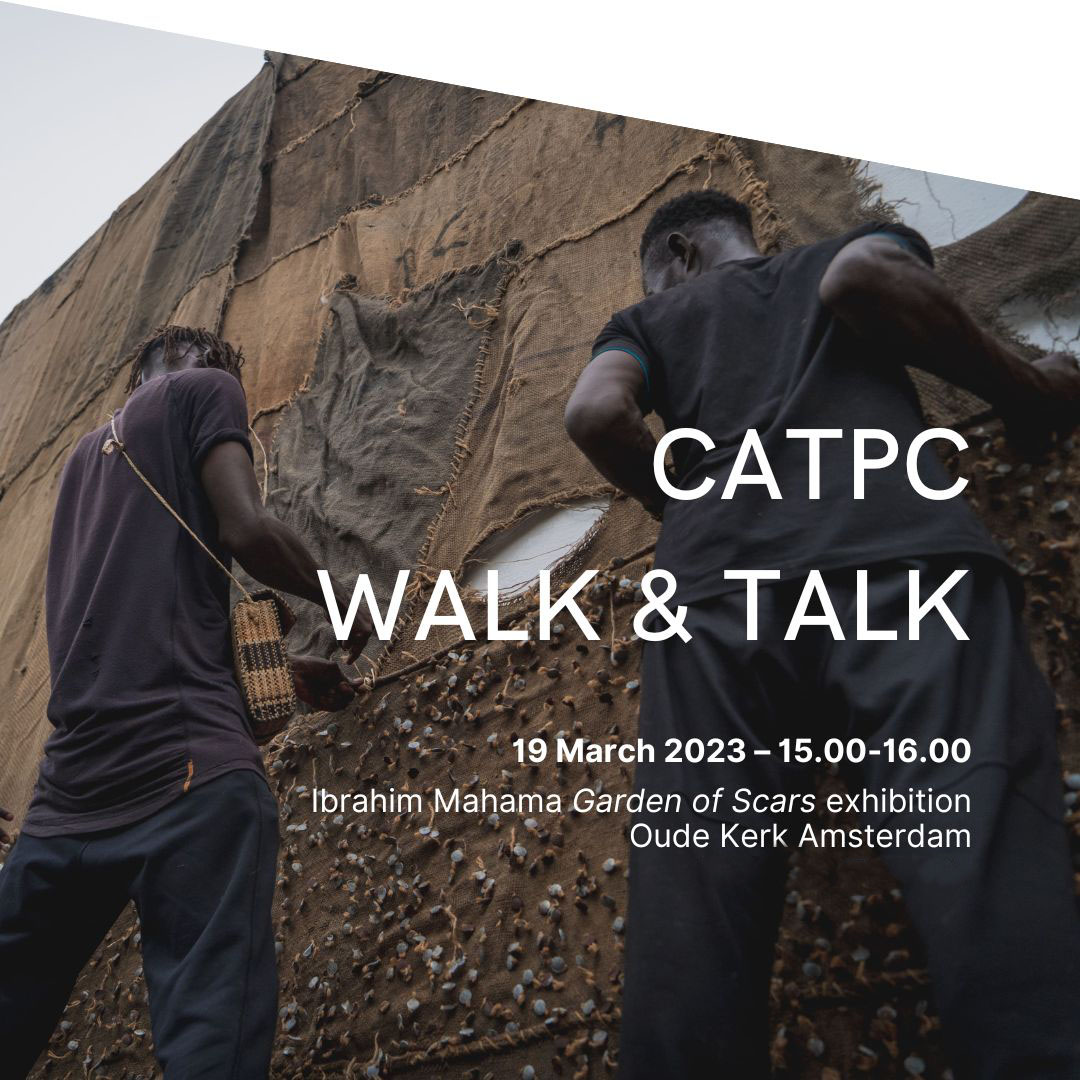
Image: Ced’art Tamasala and Matthieu Kasiama (CATPC) installing Ibrahim Mahama’s “Judgment of the White Cube” solo show at the White Cube in Lusanga, photo: Dareck Tuba, 2022
Join the Congolese Plantation Workers Art League CATPC as they reflect upon last year’s Ibrahim Mahama show Judgment of the White Cube at their museum in the middle of a plantation, the White Cube Lusanga, from the site of Mahama’s latest exhibition Garden of Scars at the Oude Kerk, Amsterdam.

